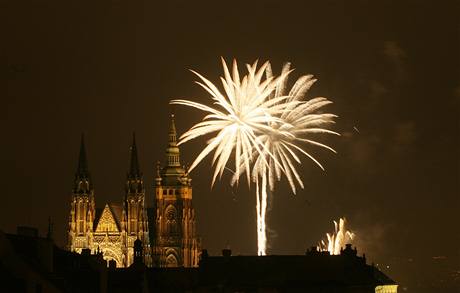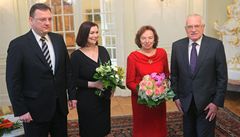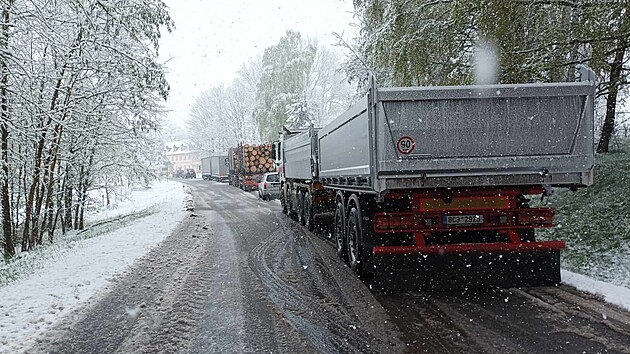New Year’s Eve and Day
Find synonyms for the following expressions in the text below:being with sb else = 1)..... |
New Year’s Eve (or Old Year’s Night) is the final day of the year in the Gregorian calendar – the 31st December. The celebration of the New Year is the oldest of all holidays. It was first observed in ancient Babylon about 4000 years ago.
Traditionally, it was thought that one could affect the luck they would have throughout the coming year by what they did or ate on the first day of the year. For that reason, it has become common to celebrate the first few minutes of a brand new year in the company of family and friends, with parties and fireworks. Parties often last through the night until the morning of New Year's Day (1st January).
Hogmanay
Insert appropriate words into the gaps in the text below:Hogmanay is the Scottish word for the last day of the year. There are many 1)....................................., both national and local, 2).............................. with Hogmanay. The most widespread is the 'first-footing' which starts immediately after midnight. The first person to enter a home after the New Year determines what kind of year the residents will have. The "first footer" often brings symbolic 3)................................... like coal to keep the house warm or baked goods such as shortbread, oat cakes, and a fruit cake called black bun, to make sure the 4).......................................... always has enough food. In Glasgow and the central areas of Scotland, the tradition is to hold Hogmanay parties 5)..................................... singing, dancing, the eating of steak pie or stew, storytelling and consumption of alcohol, which usually extends into the daylight hours of January 1st (or in some cases January 2nd which is a Scottish Bank Holiday). |
Decide which of the 2 expressions is right:In Stonehaven, Aberdeenshire in north-east Scotland, local people make up 'balls' of 1) chicken / hen wire filled with old newspaper and other dry flammable material. Each ball has approximately 1 m of wire, chain or nonflammable rope attached. At midnight the balls are 2) set / put alight and people walk along the streets, swinging their burning balls around their heads. 3) At / In the end of the ceremony any fireballs that are still burning are thrown into the harbour. In 4) last / recent years, additional attractions have been added to entertain the crowds as they wait for midnight, such as fire poi, street drumming and a firework display. |
Traditional song
The song, "Auld Lang Syne," is sung at the stroke of midnight in almost every English-speaking country in the world. At least partially written by Robert Burns in the 1700's, it was first published in 1796 after Burns' death. "Auld Lang Syne" literally means "old long ago," or simply, "the good old days."
Resolutions
One of the most common traditions is the making of New Year's resolutions. This tradition dates back to the early Babylonians whose common resolution was to return borrowed farm equipment. Popular modern resolutions might include the promise to lose weight or quit smoking.
Lucky foods
There are a variety of foods that are believed to bring luck. Traditions vary from culture to culture, but there are striking similarities in what's consumed in different parts of the world: In Spain, Portugal, Venezuela, Cuba, Mexico, Ecuador, and Peru people consume twelve 1)........................ at midnight—one for each stroke of the clock representing a different month. |
Test your knowledge HERE |
Correct answersFind synonyms.. 1) in the company of, 2) final, 3) to observe, 4) throughout, 5) to affect Insert appropriate.. 1) customs, traditions, 2) associated, connected, 3) gifts, presents, 4) household, family, 5) involving, including Decide which.. 1) chicken, 2) set, 3) at, 4) recent There are... 1) grapes, 2) cabbage, 3) Legumes, pulses, 4) pork, 5) noodles, 6) donuts, doughnuts |
Jazyková agentura SkřivánekSkřivánek je největší jazykovou agenturou ve střední a východní Evropě. Na trhu jazykových služeb působí již od roku 1994. Kanceláře a učebny agentury Skřivánek najdete v 22 městech ČR a v dalších 13 zemích světa. Jako jedna z největších překladatelských agentur v Evropě se Skřivánek stal uznávaným specialistou na evropské a asijské jazyky. Zaměstnává více než 400 kvalifikovaných jazykových odborníků a nabízí odborné překlady do všech jazyků. Kromě různých typů kurzů pro veřejnost zajišťuje Skřivánek i výuku na klíč pro firmy a jednotlivce, jazykové audity, pobytové a zahraniční kurzy nebo přípravu na jazykové zkoušky pro děti i dospělé. Více informací najdete na www.skrivanek.cz |





